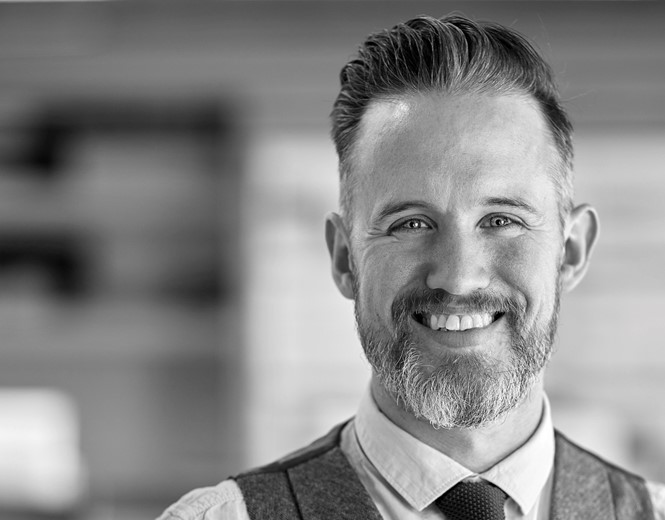Five minutes with Paul McGuigan

Paul McGuigan, head of brand strategy offer and managing partner at Thompson Brand Partners, a specialist digital branding agency working within the health and wellbeing space, speaks to Transform magazine about the role digital plays in that space, the challenges in designing for an industry that might not be able to directly communicate with its consumers, and the role brand design plays in the future of the office life.
Why is design critical to the future of healthcare both for patients and clinicians?
I guess for the same reasons that design can make a really big difference in any interaction between a service brand and its customers. The fundamental structures of healthcare are being seriously challenged and the power is shifting across the doctor's desk towards patients as consumers. Which means that healthcare brands are having to think really carefully about how they engage with patients. The ones most likely to succeed will be the ones who are great at creating new experiences which put patients at the centre. Above all, these experiences need designing so that, at every point patients feel valued, informed and reassured. A lot can be achieved by healthcare providers changing the way they operate, but a significant part of the work will be carried by the design.
What role does digital play in the health and wellbeing branding sphere?
Well, it's pretty central I'd say! For the past five years, everyone's been talking about digital transformation of healthcare. Those conversations have come up as information about health conditions and treatment has become more accessible, and as new digital tools and technologies have thrown up fresh opportunities, changing ideas about what's possible. At the same time, the rise of data and the creation of new platforms for sharing it is revealing deeper insights into patients' health, enabling new ways to identify their needs and deliver high quality care – more efficiently and crucially, in a more personalised way. So, as healthcare providers are now operating in a digital world, the brands that represent them must also be digitally-driven.
What are the challenges in designing for an industry that might not be able to directly communicate with its consumers?
Actually we've found that increasingly healthcare brands do interact directly with consumers, as patients gain more control over managing their own health. Although some of the brands we've worked on are targeted first and foremost at healthcare professionals or health service commissioners. The work we're doing with Psyomics for instance – a new digital tool for psychiatric assessment. But here, the designers' instincts still apply – we dig deep to understand what really matters to them and the challenges they face in their work. We'll always look for the big insights that help us, as designers, to address those issues.
What effects has the Covid-19 pandemic had on your work?
Well, we mentioned how health and wellbeing was already undergoing a digital transformation. Not surprisingly, Covid-19 has accelerated this process, forcing people to access healthcare through channels other than the doctor's surgery. At the same time, while they've been in lockdown, people have looked inwards, reflecting on their own health and wellbeing and taking steps actively to manage it, often turning to technology to help them.
In an increasingly digital, post-Covid-19 world, the way that brands adapt to the new reality will become more important than ever. For a lot of our health and wellbeing clients, there's been a real urgency about their work during the pandemic, and we've felt that too. So yes, we've been pretty busy!
What role does brand design play in the future of the office and its role in colleague wellbeing?
The fact is, no one's going back to the office in quite the same way as before. While working from home has been challenging for many, it's made others think again about how they work, where they work and what they expect from the workplace. As people get used to the idea of working from home, and even comfortable with it, they'll need a pretty good reason to head in to the office! Employers and landlords know that in future it's not enough to offer a desk, a lamp and a Nespresso machine. They'll need to take a more holistic view of the health and wellbeing of employees, factoring in amenities like fitness studios, cycle parks and organic cafés. Of course, it's the role of smart branding to help tell this story to potential occupiers and employees, and mark out the really desirable workspaces. Which is what we're doing with our client CEG, building a cool brand around their fab new Bristol development, EQ. As for our own studio, we'll be rebranding, and redecorating!












